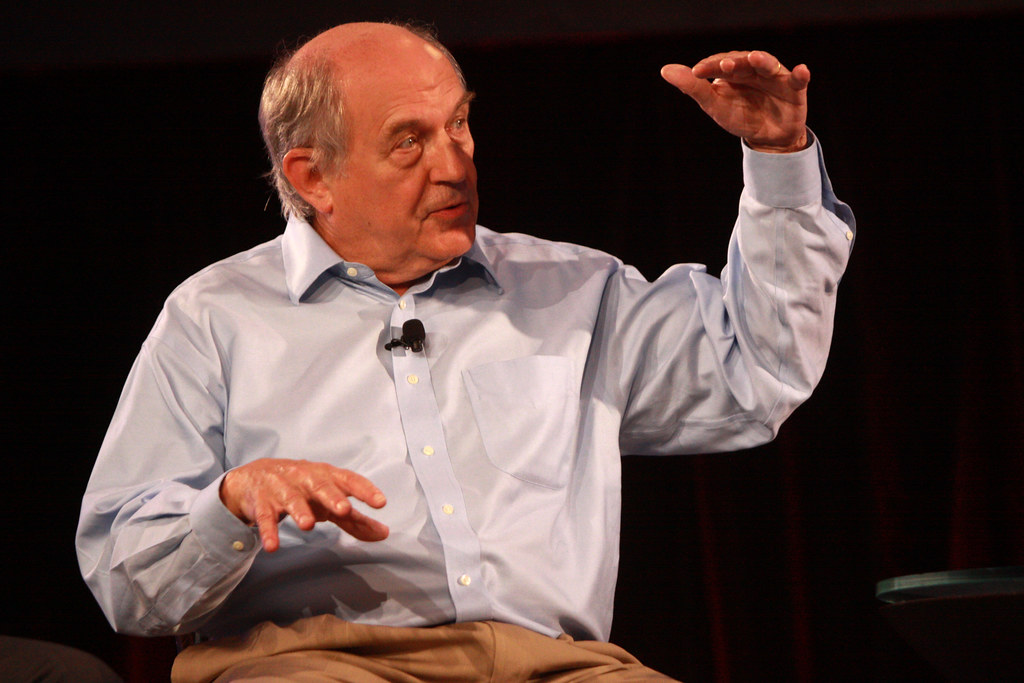Charles Murray has been a divisive figure for decades, largely due to his 1994 book “The Bell Curve.” He and his co-author, neuroscientist Richard Hernstein, argued that general intelligence can be accurately measured by IQ scores — defining intelligence as not only heritable, but also among the most significant factors in determining socioeconomic outcomes. They tracked the rise of a so-called “cognitive elite,” arguing that differences in IQ would produce even more pronounced inequalities with time and that government social policies focused on eliminating inequality would thus prove futile.
Murray’s fame today can be attributed to both the influence of his findings and the controversy surrounding them. His work in “The Bell Curve” built upon claims made in the past by other controversial figures, such as psychologist Richard Lynn. Lynn is a self-described “scientific racist” who as recently as 2018 was involved in a secret eugenics conference at University College London. The Southern Poverty Law Center has labelled Murray — based on his work — a “white supremacist” who peddles “racist pseudoscience.” While Murray’s supporters often argue that his statements about race are taken out of context and sensationalized, Murray has indeed aligned himself with researchers with explicitly racist views. Furthermore, much of Murray’s work has now been debunked by academics. In an interview with the HPR, Harvard sociology professor Jocelyn Viterna said, “I could certainly imagine teaching about “The Bell Curve” in a social science course or in a data science course, but I would bring that up as an example of how you can cherry-pick data and manipulate distributions and … suggest that correlations are casual without having a clear causal mechanism. It’s often very good as an example of what not to do.”
This year, government preceptor David Kane invited Murray to speak in his data science class, Government 50, on October 16. Facing outrage from students for this choice as well as his own allegedly racist views, Kane justified his move in an email to The Crimson, stating that, “In the age of Donald Trump, Viktor Orbán and Jair Bolsonaro, Harvard needs more speakers from the right, not fewer.” Murray, in the wake of this controversy, also tweeted that Harvard has become “too Woke [sic]” and that “The parallels between the mindset of these students and the Red Guards are scary accurate.” Murray is not alone in his criticism, as conservatives in particular have long bemoaned supposed attacks on free speech on liberal college campuses.
Murray’s framing of the argument rests upon the assumption that there are only two sides to the debate over his work. He accuses his critics of acting in bad faith, ignoring science in order to advance false but comforting narratives about how the world works. Meanwhile, he seems to see himself as one of the lone scientists willing to touch somewhat controversial topics like the heritability of intelligence. As such, he revels in the criticism that his work incites. When Author and journalist Jason Deparle interviewed Murray in 1994 following the publication of “The Bell Curve,” Murray said, “Here was a case of stumbling onto a subject that had all the allure of the forbidden.” Murray also appraised his own work as “social science pornography,” delighted with his ability to easily churn out calculations of expected income based upon differences in IQ, race, and education. Indeed, Deparle makes the argument that Murray’s work scratches an itch, providing a supposedly scientific foundation for assumptions he and others already secretly believe to be true. The allure of Murray’s research, by his own admission, is its forbidden nature and its promise of simple explanations. To him, it matters less whether his conclusions are based upon rigorous research.
Kane argues that freedom of speech is important. It is, but this is not a freedom of speech issue. A better way to frame the situation is Viterna’s principle to “follow the science,” which in this case means adhering to the past two decades of social science research and accepting that Kane’s arguments have been disproven.
Murray’s research may provoke discourse, but its inaccuracy means it has no place being showcased at a course on data science when more qualified scientists could have been invited. As Viterna argues, a “balanced” debate should not be the goal if providing balance requires legitimating shoddy pseudoscientific work. “[The University’s] goal is not to create political balance for the United States,” she said. “Our goal is to create the best knowledge possible, and to teach the best knowledge that we have available to our students.”
By allowing Murray to speak regardless, Harvard left its students vulnerable to exploitation: Charles Murray stands to gain more from speaking at Harvard than students do from listening to him. As Viterna observed, “If nobody says anything and [Murray] gets to lecture to a course filled with Harvard students, then he gets to say to all his followers, ‘See how brilliant I am? Even Harvard lets me teach their students.’ But if instead there are major protests … in those cases he gets to say, ‘See? There’s these students who are so brainwashed by the liberal left that they don’t want to hear a different perspective.’”
There are not two equally legitimate sides to this debate, and Harvard has allowed itself to be exploited by a white supremacist feigning a false equivalency for political gain. Neither Charles Murray nor his rhetoric have any place at an educational institution; freedom of speech is not an adequate justification for dangerous and disproven ideas.
Image Credit: “Charles Murray” by Gage Skidmore is licensed under CC BY-SA 2.0



